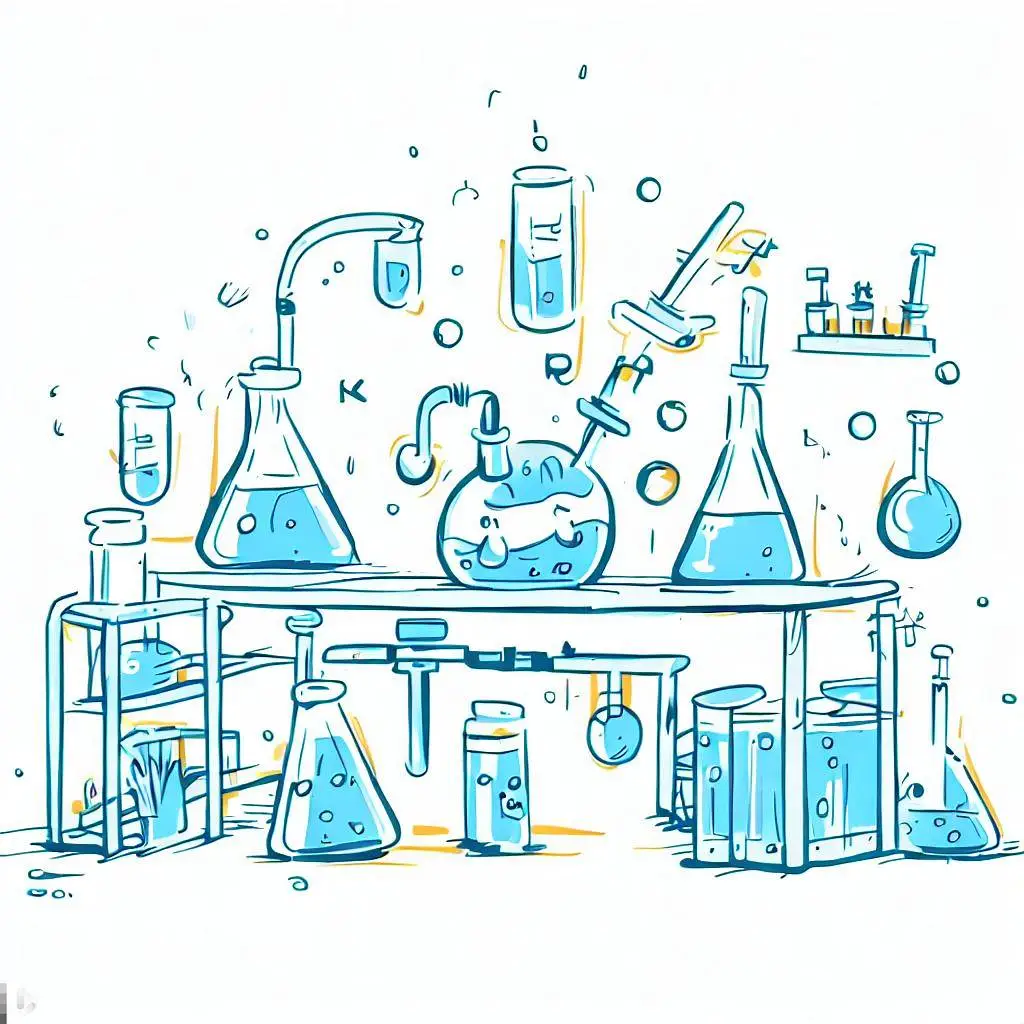Exploring Solubility of Compounds in Solvents: A Comprehensive Analysis
May 26, 2023

Dr. Charles Smith
United States
Chemistry
Dr. Charles Smith, Ph.D. in Chemistry, is an esteemed expert with over 15 years of experience in the field. His expertise lies in the study of solubility behavior, its factors, and its applications.
Seeking assistance for assignments on solubility of compounds in solvents? Our team of experienced chemistry experts is here for Chemistry Assignment Help. With in-depth knowledge and a strong background in the field, we provide reliable guidance and support for your chemistry assignments or research projects.
- Chemistry's fundamental idea of solubility governs a substance's capacity to dissolve in a solvent and combine uniformly. It is crucial to many scientific fields, including material science, environmental science, and pharmaceuticals. It is essential to comprehend how different compounds behave when they are dissolved in a solvent in order to create drug formulations that work, assess environmental contaminants, and create new materials with the desired properties.
- The characteristics of the solvent have a significant impact on a compound's solubility. On the basis of their intermolecular forces and charge distribution, solvents can be classified as polar or nonpolar. Because polar solvents like water and ethanol have some positive and some negative charges, they can dissolve polar compounds through hydrogen bonding and other intermolecular forces. Hexane and benzene are examples of nonpolar solvents that preferentially dissolve nonpolar or hydrophobic substances because they have little charge separation.
- Temperature, pressure, particle size, the make-up of the solute and solvent, and many other variables all have an impact on solubility. In general, solid solutes become more soluble as the temperature rises, whereas gases show the opposite pattern. Although it has only a small impact on solids and liquids, pressure has a significant impact on the solubility of gases. Larger surface areas of finely divided solutes increase their solubility because they have better contact with the solvent. Their solubility behavior is also influenced by the polarity, intermolecular forces, and molecular structures of the solute and solvent.

- In-depth research on the solubility of compounds in solvents enables scientists to develop the best formulations, make accurate predictions, and comprehend how substances behave in various settings. In-depth discussion of solubility's complexities will be provided in this blog, along with an examination of its causes, uses, and experimental methods. The importance of solubility in advancing scientific understanding and technological development will be highlighted in the end.
The Characteristics of Solvents
The characteristics of the solvent have a significant impact on a compound's solubility. In general, solvents can be divided into polar and nonpolar solvents, with each having unique solvation properties. Because they have a partial distribution of positive and negative charges, polar solvents like water, ethanol, and acetone can dissolve polar compounds. Due to the presence of polar functional groups like hydroxyl (-OH) or carbonyl (C=O) groups, which can take part in hydrogen bonds or dipole-dipole interactions, these solvents are polar. Contrarily, nonpolar solvents have little to no charge separation and can dissolve nonpolar or hydrophobic materials. Hexane, benzene, and toluene are examples of typical nonpolar solvents. We can learn more about the solubility behavior of various solvents by comprehending their solvation properties.
Soluble components:
The solubility of compounds in solvents is influenced by a number of variables. The nature of the solute and solvent, as well as temperature, pressure, and particle size, are some of these variables. Let's look at each of these elements in more detail:
Thermometer:
A key factor in determining solubility is temperature. Most solid solutes are generally more soluble in solvents as the temperature rises. For ionic compounds, where the dissolution process is endothermic, this behavior is frequently seen. The solvent molecules' kinetic energy rises as the temperature rises, enabling them to overcome intermolecular forces and interact with the solute particles more successfully. The exothermic dissolution process of some substances, such as gases, causes their solubility to decline with increasing temperature. This is because increasing temperature decreases solubility as the equilibrium moves towards lower solute concentrations. Solvation of gas molecules is typically an exothermic process.
Pressure:
Depending on the kind of solute and solvent, pressure has a different impact on solubility. According to Henry's law, the partial pressure of a gas above a liquid directly correlates to the gas' solubility in the liquid. As a result, increasing pressure improves the solubility of gases. Understanding phenomena like carbonation in beverages, where carbon dioxide gas dissolves under pressure, depends on this relationship. However, the solubility of solid and liquid solutes is hardly influenced by pressure. Temperature and the intermolecular forces between the solute and solvent are the main factors that affect the solubility of both solid and liquid solutes.
Particle Size:
Solubility is also impacted by solute particle size. Since finely divided solutes have more surface area, they come into contact with solvent molecules more frequently, increasing their solubility. As a result, a solid solute's rate of dissolution is accelerated when its particle size is reduced. In many different industries, including the pharmaceutical industry, where drugs are processed into smaller particle sizes to increase their solubility and bioavailability, this phenomenon is frequently used.
Solute and Solvent Nature:
The polarity, intermolecular forces, molecular structure, and solubility behavior of the solute and solvent are all influenced by one another. Through the formation of intermolecular attractions like hydrogen bonds or dipole-dipole interactions, polar solutes typically dissolve in polar solvents. As a highly polar solvent, water is referred to as the "universal solvent" because of its propensity to dissolve a variety of polar compounds. Due to similar intermolecular forces, nonpolar solutes also dissolve easily in nonpolar solvents. The way that nonpolar solvents, like oil, dissolve in nonpolar solvents like hexane serves as an illustration of this idea.
Rule of Solubility:
Chemists frequently use solubility rules to forecast the solubility of ionic compounds. In order to determine whether a compound is soluble or insoluble in water or other solvents, these rules offer guidelines based on empirical observations. The most prevalent solubility rule is "like dissolves like," which states that substances with similar polarity or solvation properties have a tendency to dissolve in one another. There are, however, some exceptions to these guidelines, and the type of ions that are present in the compound can also have an impact on solubility. For instance, while the majority of sulfates are soluble in water, barium (BaSO4) and lead (PbSO4) sulfates are not.
Dissolution Rate Influencing Factors
In addition to solubility, the rate of dissolution must also be taken into account. The rate at which a solute dissolves in a solvent is referred to as the dissolution rate. The surface area, stirring or agitation, temperature, as well as the makeup of the solute and solvent, are some of the variables that affect the rate of dissolution. The rate of dissolution is accelerated by grinding or pulverizing the solute to increase its surface area. Increased contact between the solute and solvent during stirring or agitation makes the dissolution process easier. The rate of diffusion and the interactions between solutes and solvents are all impacted by temperature, which also affects the molecules' kinetic energy. The dissolution rate is also influenced by the nature of the solute and solvent, including their intermolecular forces, molecular sizes, and solvation properties.
Relevance and Applications:
In a wide range of scientific fields, the solubility of compounds in solvents has significant ramifications. Solubility is a key factor in the development, formulation, and bioavailability of pharmaceutical drugs. Medication absorption and effectiveness may be hampered by poor solubility. Scientists can increase the solubility of drugs and improve therapeutic outcomes by comprehending solubility factors and using solubilization techniques. In order to evaluate the fate and transport of contaminants in natural systems, environmental scientists rely on solubility data. It is easier to assess pollutants' potential effects on ecosystems and create efficient remediation plans when you are aware of their solubility. To create new materials with desired properties, material scientists research solubility. Materials like coatings, polymers, and composites are affected by the solubility of substances in solvents in terms of their properties and functionality. These uses emphasize how crucial it is to comprehend how compounds behave in terms of solubility in solvents.
Experimenting methods
To measure and research solubility, a variety of experimental techniques are used. In order to build solubility curves, phase diagrams, and thermodynamic models and gain a deeper understanding of the dissolution process, these techniques provide useful data. Typical experimental techniques include:
Gravimetric Technique:
In order to calculate the amount dissolved using this method, the mass of the solute is measured both before and after dissolution. Usually, the solute is dissolved in a known volume of solvent, and any extra solute that is not dissolved is filtered or separated. Calculating the solubility involves comparing the masses.
Measurements of conductivity:
The change in electrical conductivity that occurs when a solute dissolves in a solvent is the basis for this technique. The quantity of ions in a solution directly affects its electrical conductivity. The solubility and level of dissociation can be calculated by measuring the conductivity of a solution at various solute concentrations.
Spectroscopic analysis:
The absorbance or transmission of light through a solution containing a solute is measured using spectrophotometric methods. By comparing the measured absorbance to a calibration curve or by applying the Beer-Lambert Law, one can ascertain the solute concentration.
Conclusion:
Chemistry research on the solubility of compounds in solvents is very interesting. Scientists can forecast and control the solubility behavior of various compounds by looking at the properties of solvents, comprehending solubility factors, and taking into account solubility rules. The uses of solubility knowledge in various scientific fields highlight how important it is. Further developments in materials science, environmental remediation, and drug delivery will result from ongoing research in this area, which will be advantageous to society as a whole. Understanding the complexities of solubility allows us to innovate and advance science by providing a deeper understanding of how substances interact with their surroundings.